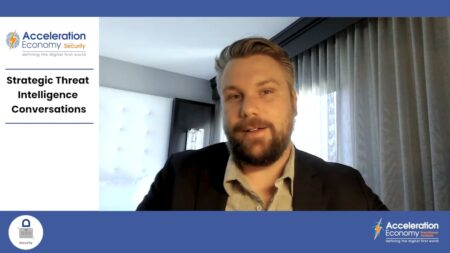Machine learning is nothing new in cybersecurity, but in recent years, it’s gotten significantly better, says Rob Wood.
Cybersecurity Minute
Rob Wood explains why cybersecurity ML models need clean and ample data, proper input ranges, and robust data platforms, such as the security data lake.
Your competitors are already doing it, so you do not want to put your head in the sand, says Rob Wood.
The integration of machine learning and AI capabilities in cybersecurity offer opportunities for improved specificity, consistency, and scalability.
The human factor plays a critical role in endpoint security, and to minimize the risks of insider threats and human error, organizations should focus on educating employees and fostering a culture of security.
Endpoint security tools like Palo Alto Networks’ Cortex protect organizations from cyber threats and are especially necessary in the era of remote work.
Security leaders should have conversations with key personnel in HR, finance, and sales/marketing to ensure alignment between security and business goals.
These two complementary cybersecurity practices, when combined, enable organizations to quickly and effectively identify and mitigate potential cyber threats.
Try framing cloud security conversations in terms of business outcomes and using analogies for better results.
The new resource provides intelligence on malicious actors and attack vectors, especially those used in recent software supply chain attacks.
Organizations need to invest in the right people, processes, and technologies to protect themselves from online threats in particular.
Contextualizing your organization’s key risks and general technology trends with peers is the best way to prepare against future security threats.
Cybersecurity teams must work closely with finance teams to help them determine what kind of data is essential for automation to deliver more benefits than risk.
Fear, uncertainty, and doubt (FUD) surround AI in cybersecurity, and practitioners need to have proactive conversations to combat it.
Chris Hughes reviews a new CISA publication, which explains why cybersecurity risk must be moved away from consumers to “secure by default” products.
Strategic threat intelligence can be used to prepare for future threats, and an organization’s strategy should be adopted accordingly.
Threat intelligence gathers and utilizes data about potential threats to keep corporate data safe. It’s especially useful in a multicloud scenario.
Generative AI’s rapid rise makes it imperative for security teams to establish policy frameworks and guardrails in order to mitigate risk.
The release of Microsoft’s Security Copilot is only the beginning of generative AI use cases for cybersecurity tooling, says Chris Hughes.
ChatGPT may be getting a lot of attention, but generative AI-powered deepfakes have been around for a while, and security teams can’t forget this riskier side of the technology, says Rob Wood.




















